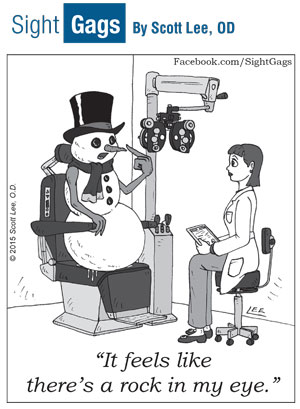Growth within a profession is usually a celebrated event, but not everyone applauded as the University of Pikeville-Kentucky College of Optometry (KYCO) announced it is recruiting for its inaugural class in 2016. Though it may serve a regional need, some ODs have concerns over its national impact.
“Acceptance rates for medicine and other health care professions are around 40%, and at the moment, optometry has an acceptance rate of 70%,” says Dominick Maino, OD, MEd, a professor at Illinois College of Optometry. “Although this has not appeared to affect the quality of our entering classes, at some point I would suspect that quality will suffer.”
 |
Another major concern is the influx of graduates.
“I think we are already crowded [in the profession], and you have to add in, of course, the market forces that are going on,” says Bill Potter, OD, chief of Optometry and Contact Lens Services at Millennium Eye Care in West Freehold, NJ. “Health care incomes don’t seem to be going up, so if you start to drown the market with job candidates, it’s not going to get any better. It’s a good possibility that, long-term, they are going to drive down average incomes.”
Despite these concerns, KYCO has some key selling points. It’s the only optometry school in Kentucky, West Virginia, Virginia, North Carolina, South Carolina or Georgia and hopes to address a growing need in rural Appalachia, a region with the highest incidence of severe vision loss, according to a University press release.
“The theory is, if you put the school in a relatively underserved regional area, it will help,” Dr. Potter says. While that’s a noble goal that seeks to fulfill a public health need, Dr. Potter wonders whether or not the region will be able to retain those new ODs when they enter practice. “People are so mobile these days that I am not convinced it is going to pump up the region.”
The location also offers unique learning options.
“Given that the University of Pikeville-Kentucky College of Optometry was coming to the area, the board and key leaders in optometry in Kentucky felt it must be a best-in-class educational institute,” says Paul M. Karpecki, OD, director of clinical research and head of the ocular surface disease clinic at the Koffler Vision Group in Lexington, Ky. “Because of the expanded scope of practice in Kentucky, students will be proficient in advanced diagnostics, including selective laser and periocular surgical procedures.”
This could be a key selling point, says Dr. Potter.
“That is a big positive, at least in terms of potential, because it is a drawback in states that have optometry schools historically where the laws were restrictive. If the school is already up and running with privileges, that is a big positive for sure.”
Yet, many ODs are still unsure. “Speaking as an individual, I have to wonder why any university at this time would want to consider building a new school or college of optometry,” Dr. Maino says. “In 2014, there were 2,604 applicants for 1,789 seats; if this trend continues, schools and colleges of optometry will be fighting to fill a class with qualified students.”
“I think skepticism on this is healthy,” Dr. Potter concludes. “The benefit of this needs to be shown, and I’m just not positive it will have the desired effects. The negative effect, of course, is if you are pumping in more grads, something’s gotta give, and what’s going to give is going to be the incomes.”
